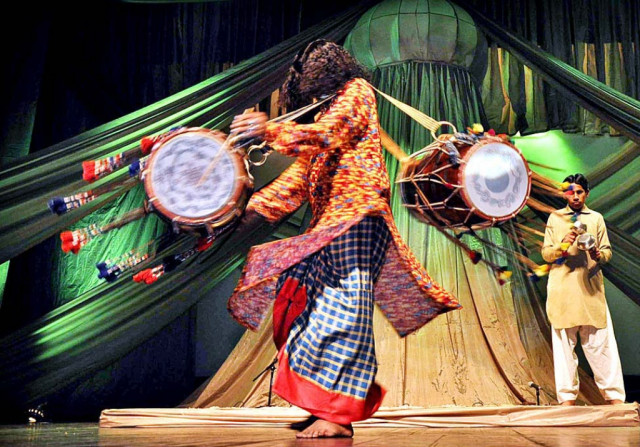
Speaking at a lecture on his recent book, Boivin went on to explain why he considers it a culture. "My main concern was to study Sufism through the lens of anthropology."
The book, 'Historical dictionary of the Sufi culture of Sindh in Pakistan and India', has been written in light of the experiences Boivin had as an ethnologist. Unfortunately, the launch of the book has been delayed on part of the publisher.

"My first training was in contemporary history," he said while speaking to The Express Tribune. "Later, I studied Islamic studies in Arabic and Persian and finally ethnography. The book is based on a combination of my three trainings."
He began his lecture with the spread of Sufi culture in Sindh. He showed different paintings during his presentation that depicted the various components of the Sufi culture. Music was one of them. A 17th century miniature painting showed Sindhi Sufi saint Shah Abdul Latif Bhitai sitting among deserted trees with a shrine and musical instruments in the background. Similarly, a painting of Sachal Sarmast showed the significance of music in Sufi culture. He was sitting on a 'gaddi', which is the seat of the Sufi saint, and had a sitar by his side.
Boivin then shifted his focus to 'the social function of Sufism in Sindh'. He explained how a procession is headed by the different leaders to the dargah (shrine).
"According to local tradition, the procession is led to mark the Urs that is that is celebrated on the date of the death of the saint," he said. "The death is the union or the merging of the saint with God." He explained how the Sufi attempts to achieve extinction of the self in God.
On the first day, a man having a Syed lineage commands the procession. Boivin showed a picture of the procession in which a man was in the middle of the procession. "He is Ram Chand and is Hindu," he said. "On the second day, he takes the mehndi because, according to local tradition, his ancestors treated Qalandar well and the saint said that this family shall lead the procession thereafter."
After explaining the procession, Boivin showed pictures of a 'kashkol' or 'kishti' which is a small metallic boat-shaped bowl. "This is a symbol of wandering dervishes," he said. "The kishti is paraded throughout the city to reinforce the relationships among the Sufi masters, the disciples and the fakirs."
"Some historians of the 19th century believed that Sufism stemmed from Hinduism," said Boivin, while speaking to The Express Tribune. "However I disagree as Shah Abdul Latif Bhittai's poetry is deeply related to the Quran. Nonetheless, the goal of merging with God is mutual with the Hindu jogis."
Talking to The Express Tribune, the writer said that the main characteristics of Sufi culture are tolerance and integration of different classes, genders and religions. Sufi culture has something to offer for women that may not be found anywhere else in society for them.
"The society here is still patriarchal and Sufi culture is not bringing about a total transformation," he said. "However, there is a room in Sufi culture for women that may not be found anywhere else. In Sehwan Sharif, there are women who are peers (saints) and have male followers."
Published in The Express Tribune, October 29th, 2014.


















COMMENTS
Comments are moderated and generally will be posted if they are on-topic and not abusive.
For more information, please see our Comments FAQ